The Finnish sauna is a substantial part of Finnish culture. It was inscribed on the UNESCO Intangible Cultural Heritage Lists at the 17 December 2020 meeting of the UNESCO Intergovernmental Committee for the Safeguarding of the Intangible Cultural Heritage. The sauna in Finland is an old phenomenon and its roots are difficult to trace.
Saunas are an integral part of the way of life in Finland. Sauna tradition is one of the most important parts of Finnish identity and cultural heritage. Finnish sauna culture is wet, steamy, sometimes smokey, an important part of the national identity. Most Finns cannot imagine not having a Sauna in their home. It’s estimated that there are about three million saunas in Finland – in other words, a sauna for every other Finn! In the basement of almost every apartment building there is a sauna. Typical saunas are continuously-heated wooden saunas in summer cottages and electric saunas in city apartments.
Sauna is good for everyone, young and old.For us Finns sitting in a 100-degree sauna is everyday business, but for a novice it’s an exciting (and highly recommended!) experience. Sauna culture in Finland is an integral part of the lives of the majority of the Finnish population. Sauna culture, which can take place in homes or public places, involves much more than simply washing oneself. In a sauna, people cleanse their bodies and minds and embrace a sense of inner peace. People threw water on hot rocks in a small room to create a hot and cleansing steam that was used to clean every pore of ones body. In your private sauna you can enjoy silence and relax by lounging on the benches. Public saunas, on the other hand, are social places where you should be prepared to chat with strangers.
Taking a sauna begins with having a wash (usually a shower), followed by a sit in the sauna room, the room being typically warmed to 80–110 °C (176–230 °F). Traditionally the Finnish sauna is taken without clothes, but this depends entirely on the place and your company. Water is thrown on the hot stones topping the kiuas, a special stove used to warm up the sauna. This produces great amounts of wet steam, known as löyly, increasing the moisture and the apparent temperature within the sauna. The humidity level is in Finnish sauna is most of the time often relatively low, typically up to 30% maximum. The normal temperature of the sauna is 70-90 degrees. A 100-degree sauna is also common, but for many it’s already too hot. 120 degrees is sheer macho. You should sit in the sauna for a short period at a time. A suitable duration is 10 minutes in sauna and 10 minute cooling after it.
Traditionally in old times and in rural areas the sauna is heated by burning wood. The wood stove sauna is very common type, and there is also savusauna (smoke sauna) does not have a chimney. Burning wood heats a large volume of sauna stones, onto which water is poured. The sauna stones are typically heated to around 200-400°C temperature.
Modern apartments have electric saunas. The most popular heaters for Finnish saunas are electric: they warm up the stones that radiate the heat inside the sauna. In city apartments, and in most public saunas, an electric sauna stove (sähkökiuas) is used, as it does not require open fire and offers additional features like time delay settings, thermostat and temperature limiter. Also electric saunas usually do have kiuas stones piled over or around the heating element to allow löyly thrown onto them. An electric sauna heater uses electricity to heat elements that create the heat that is characteristic of a sauna. As with wood burning sauna heaters, electric sauna heaters heat a large volume of Finnish olivine diabase sauna stones, onto which water is poured. This creates the distinctive löyly (pronounced ‘low-lou’, meaning sauna steam or sauna atmosphere) of an authentic Finnish sauna experience. Can you pour water on electric sauna? It is not necessary but highly recommended. Water should be thrown on the sauna heater rocks with the use of a ladle so that the right amount of water is applied. Once the water hits the rocks, it turns to steam. You should not pour too much water onto the heater though. The sauna stones are typically heated to around 200-400°C temperature and the electric heaters inside have much higher temperature (up to 580-680 °C).
There are very many saunas, and sometimes accidents happen. The sauna burns almost every day in Finland. Fires break out in sauna facilities in Finland about 400 times a year. Fortunately, sauna fires rarely lead to deaths. Typically users make mistakes lead to sauna fires – the wick gets misplaced on the heater, the clothesline fails, the heater is attached incorrectly. For safety reasons you should not dry your clothes in sauna or use it as a storage room, but some people do that. About two-thirds of sauna fires start in electric saunas. It seems that electric stoves are more prone to faults than wood stoves.
I have an electrically heated sauna at home and seen them fail. In the beginning of this month my electrical sauna stove had failure with flames coming out of it two days ago. Fortunately there was not major damage or anyone injured. When the flames started going out from the kiuas. First I switched off power from mains panel breakers (3x16A 400V) and then poured bucket of water on it to stop flames. Then I evacuated before the potentially very dangerous smoke get out from sauna, and closed all doors. My right initial moves worked to put fire before fire department arrived. Fire department then checked the situation and made sure that the fire had not spread anywhere (they used thermal camera to check the wooden sauna panels and kiuas).
This potential disaster got noted by Finnish National news organization because there has been some deadly sauna fires lately on news:
Onnettomuudet
Sähkökiuas syttyi palamaan Espoossa
Asukkaat saivat palon sammumaan kytkemällä sulakkeen pois.
https://yle.fi/a/74-20058225
According to the Länsi-Uusimaa situation center, the fire stayed in the stove itself and did not spread further. Flames were visible in the stove. There were no personal injuries from the situation.
The residents extinguished the fire in the electric stove by turning off the fuse. The rescue service suspects a short circuit as the cause of the fire.
The person on duty at the emergency center felt that the residents had acted well in the situation. If a fire breaks out in the electric stove, it is recommended to turn off the electricity, for example by removing the fuse from the electrical cabinet.
The situation center also advises to call the emergency number 112.
The rescue service of Länsi-Uusimaa also reported on the fire in the message service X.
The kiuas was made by a well known Finnish manufacturer Harvia. The company founded by Tapani Harvia in 1950 has grown from a small artist’s forge into one of the world’s leading sauna heater manufacturers and a forerunner in the sauna business. Harvia has remained a Finnish family enterprise and the Harvia companies now employ 250 people.
The kiuas was Harvia Vega, which is a popular type used in Finland (A total of 300 000 Vega stoves have been sold by 2017, of which approximately 180 000 in Finland, and the model is still sold). The exact model was Harvia Vega BC80, which is 8 kW heater powered from three phase power (3x16A 230/400V). Over the years there has been reports on problems with fire on the timer switch and in the heating elements.
Sähkökiukaista satoja vaaratilanteita – yleensä syynä rikkoutunut vastus article at
https://www.taloustaito.fi/koti/sahkokiukaista-satoja-vaaratilanteita–yleensa-syyna-rikkoutunut-vastus/#5b6c2129
says:
A loud bang is heard when heating the sauna. In the middle of the sauna, the heater starts to crackle and suddenly flames appear. When you throw the slather, the heater starts to roar and throw sparks. An unexpectedly broken electric stove can cause a fire or fire hazard. To prevent the fire from spreading in an emergency, it is important that there is nothing flammable near the stove.
According to the findings of the insurance company Lähi-Tapiola, the most common accidents caused by electric stoves are related to resistors breaking. The electric resistance is the part of the heater that creates heat in the sauna: it heats up and heats the surrounding stones.
“A heater is a device that wears out in use. The metal of the resistors can weaken and suffer, for example, if the heater stones do not cover the resistors and cold water is thrown directly on them. In addition, if the stones are allowed to move or crumble, they can twist and break the resistors,” from the Itä-Uudenmaa rescue service leading fire inspector Timo Kouki says in the press release.
Here is what the kiuas looks like:
A closer look shows the failed heater resistors:
The rocks are touching the sides of the heating element but not not sitting on top of those elements. The top stores have been moved during the incident and after it in inspection done by several people (fire department, me, electrician). It is interesting that I saw the fire from the heating resistors. They were coming from heating resistors because there was nothing else that could be flammable on the kiuas. Looks like the heating elements experienced a meltdown. Manufacturing defect?
The heating resistors catching fire is said to be quite rare, but it does happen sometimes. In addition to my case I know one other same model kiuas had had same thing happen. And I have witnessed many years ago this happen in a bigger kiuas (with flames, smoke and sparks) – you pour water on broken open heating element, of course sparks will fly.
To get the idea of the operation of electric kiukas, here are some views to the manual:
Here are the kiuas controls with the heat setting and timer:
Here is the picture of the different ways this kiuas can be wired to the electrical power supply. In my case the kiuas was powered from three phase 16A 230/400V 50 Hz mains power source. One interesting thing is that the kiuas does not use ground fault detector in the mains panel for protection, even if it is a device in environment where people throw water on it. The manual discourages the use of ground fault detector on the line powering the kiuas (due possibility of false tripping). Some people find electric sauna heaters frightening, first because RCD-s are not used with them and secondly because electrical connections underneath those heaters are really simple push-on connectors and open to moisture.
Sources:
https://featuringfinland.com/finland-sauna-culture-guide/
https://en.wikipedia.org/wiki/Finnish_sauna
https://ich.unesco.org/en/RL/sauna-culture-in-finland-01596
https://saunologia.fi/saunastandardit/
https://finnmarksauna.com/collections/electric-sauna-heaters
https://teplodar.eu/gb/14-heating-for-sauna?gclid=Cj0KCQiAr8eqBhD3ARIsAIe-buOC4wSFY2ao2C_ObbE7dDMv-iqZZndbuYxA3ZUevBiM5TNO3M3BqXgaAmhoEALw_wcB
https://www.fluidra.com/projects/finnish-saunas/
https://nordicperspective.com/culture/finnish-vs-swedish-sauna
https://www.harvia.com/fi/ideat-ja-trendit/vastuullisuus/vaihda-kiuaskivet-ja-vauhdita-saunan-lampenemista-saasta-energiaa-ja-aikaa/
https://taigatimes.com/blog/finnish-sauna-culture/
https://yle.fi/a/3-9917586
https://www.lahitapiola.fi/tietoa-lahitapiolasta/uutishuone/uutiset-ja-tiedotteet/uutiset/uutinen/1509582584409
https://yle.fi/a/3-9917586
https://www.finlandphilosophy.com/en-ww/harvia.aspx#:~:text=The%20company%20founded%20by%20Tapani,companies%20now%20employ%20250%20people
Sähkökiuas voi aiheuttaa palovaaran – ”Tärkeää, ettei ympärillä ole mitään syttyvää”
https://www.lahitapiola.fi/tietoa-lahitapiolasta/uutishuone/uutiset-ja-tiedotteet/uutiset/uutinen/1509576002863
Tutkimus: alkusammutus tuottaa tuloksia – hätiköinti aiheuttaa kuitenkin tarpeettomia vahinkoja
https://www.lahitapiola.fi/tietoa-lahitapiolasta/uutishuone/uutiset-ja-tiedotteet/uutiset/uutinen/1509582584409
https://keskustelu.suomi24.fi/t/11268125/harvia-vega—huippuluokan-peruskiuas
https://www.harvia.com/fi/tuotteet/HCB600400S/vega-bc60-60-kw-steel
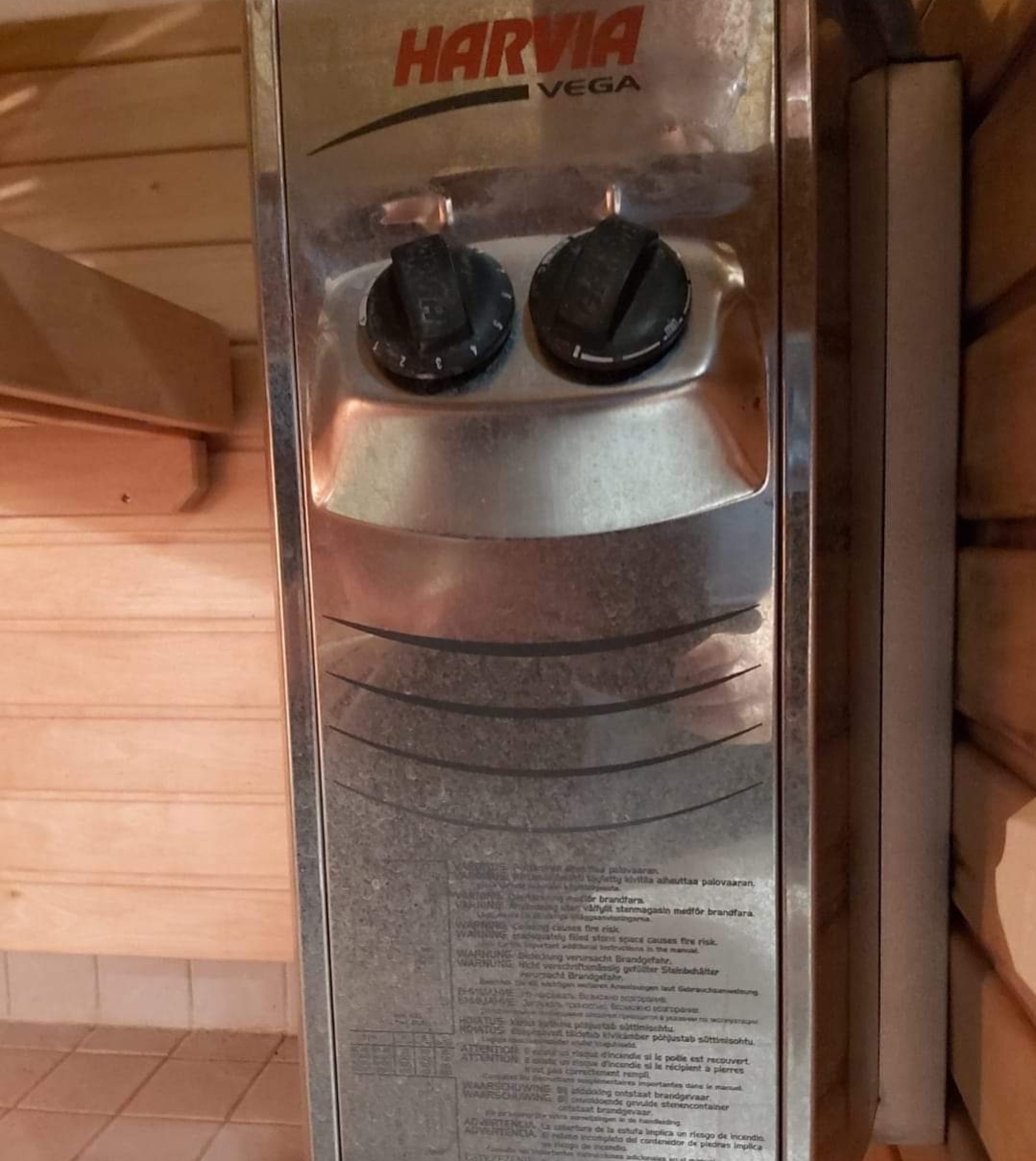
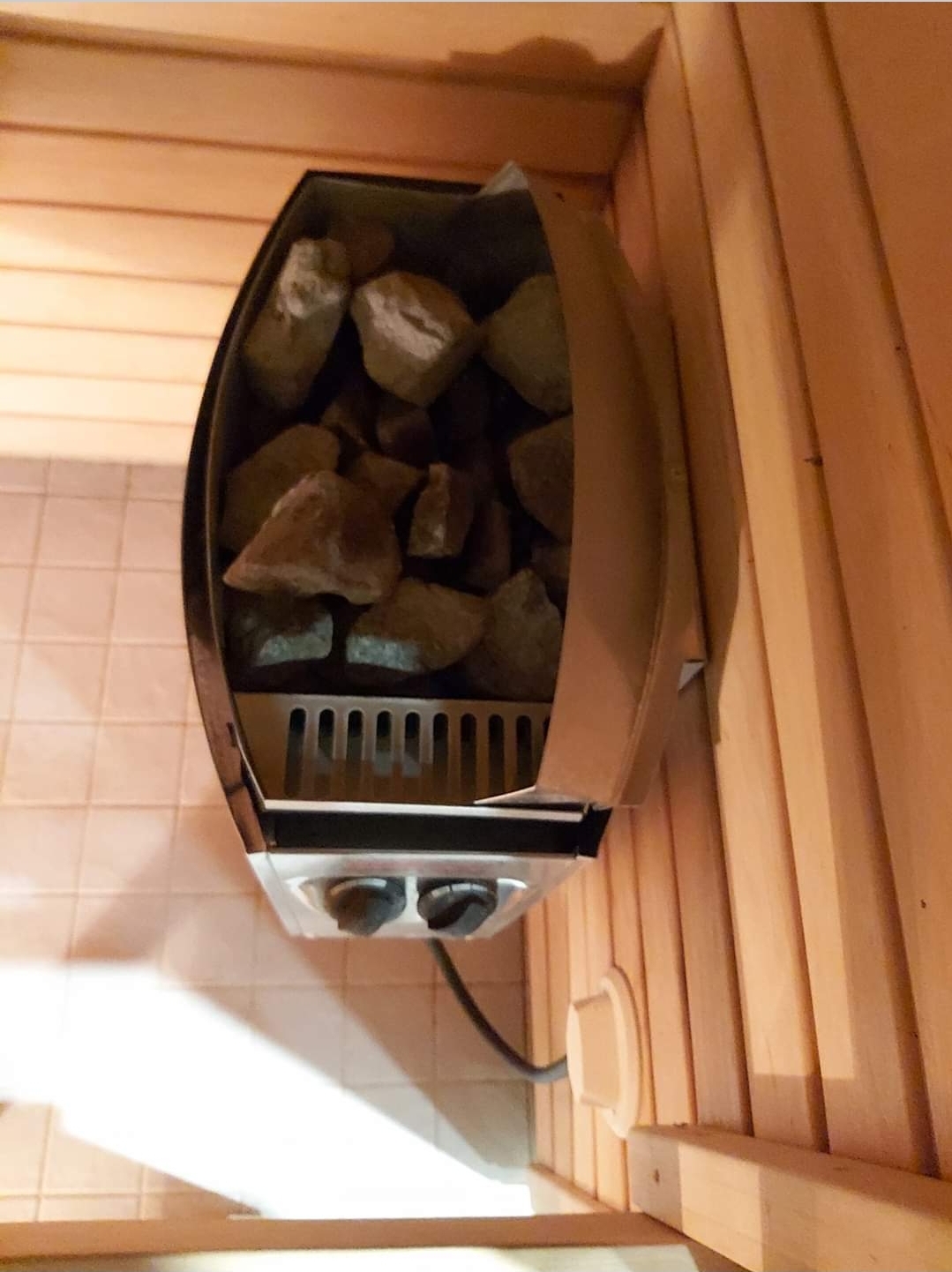
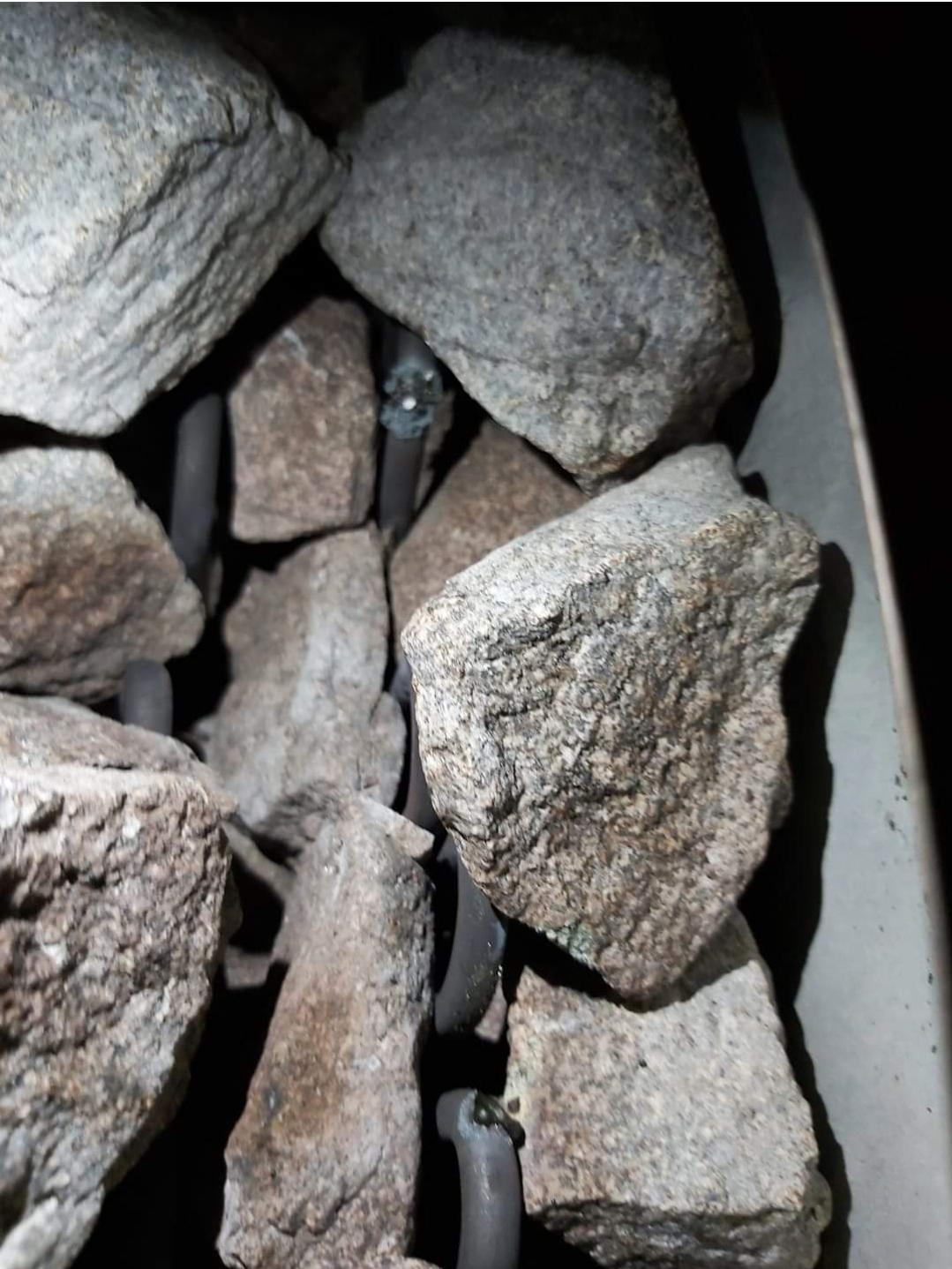
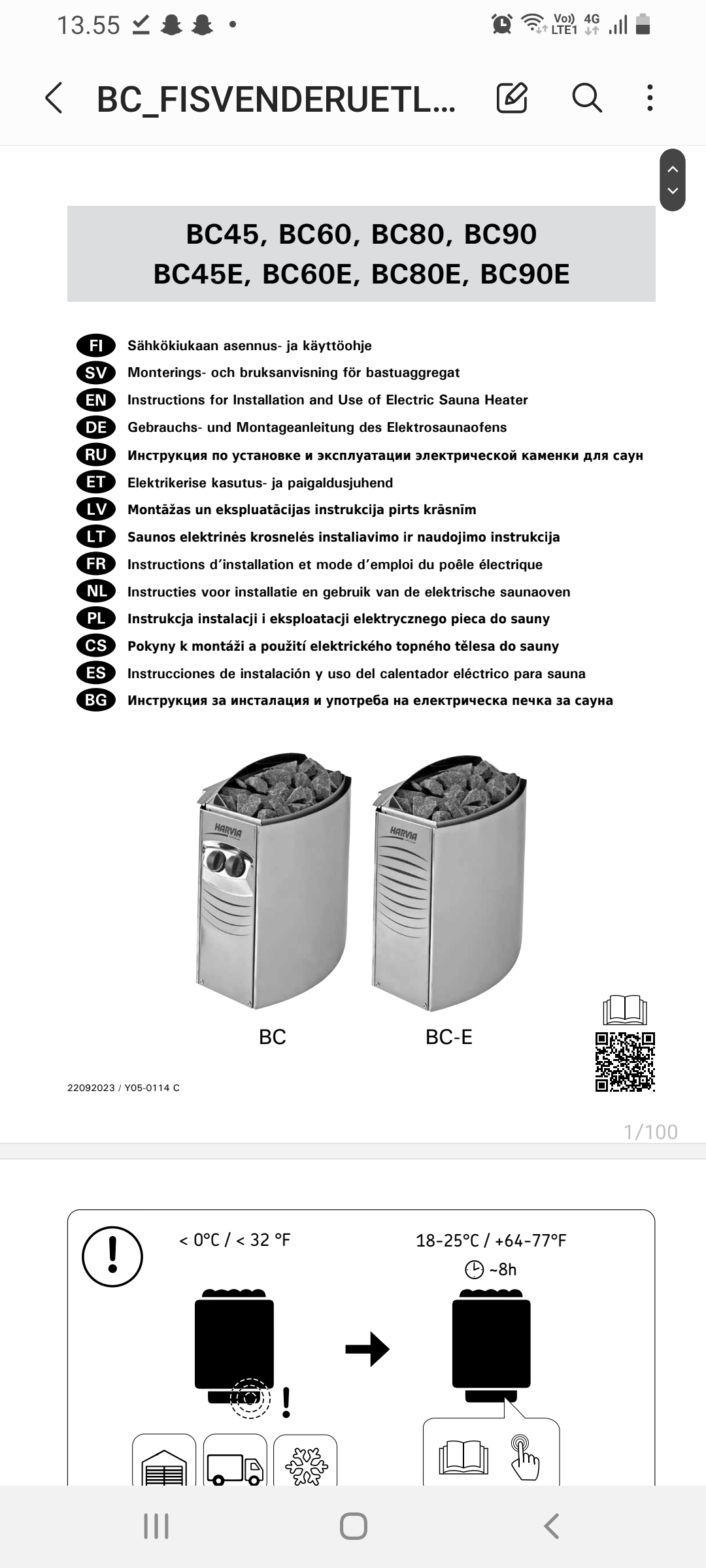

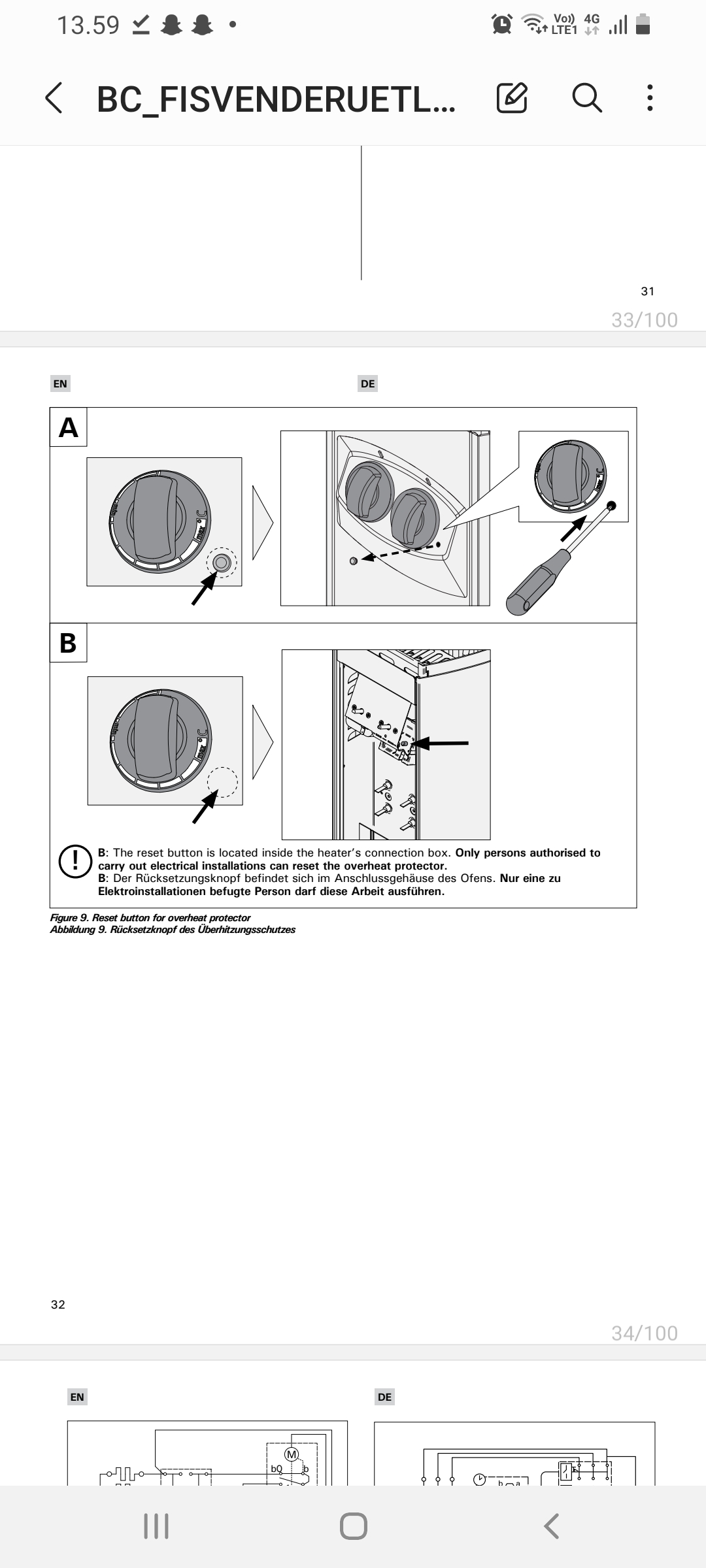
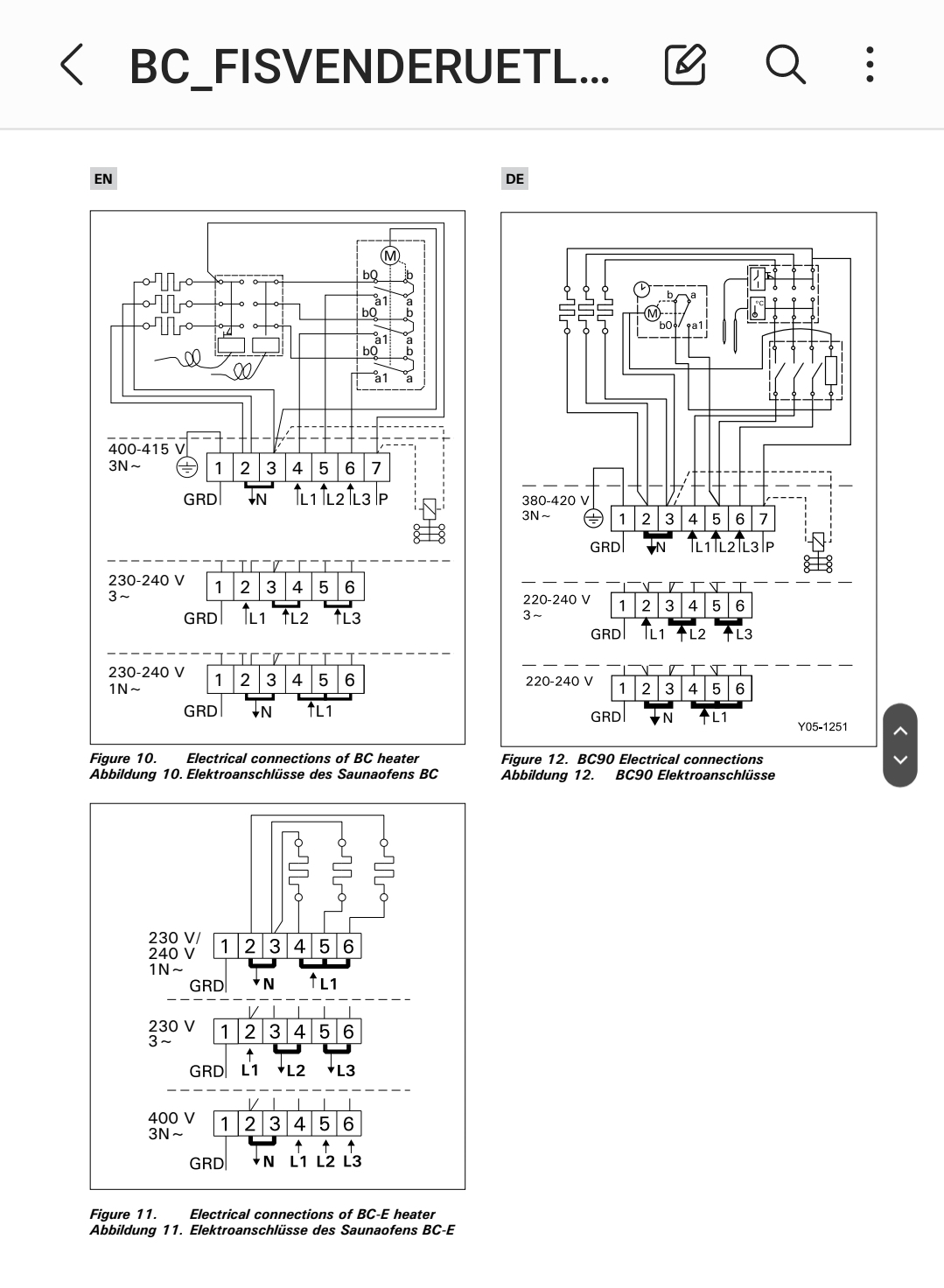
21 Comments
Tomi Engdahl says:
Ravintoloitsija paljastaa: Näin Ratinan saunapalo sai alkunsa
https://yle.fi/a/74-20063468
Tampereella kauppakeskuksen kattoterassilla syttynyt tulipalo johtuu alustavien tietojen mukaan kiukaan suojapellin puuttumisesta. Sauna on tarkoitus rakentaa uudestaan.
Tampereella Ratinan kauppakeskuksen katolla syttyneestä tulipalosta on saatu uutta tietoa.
Lauantainen tulipalo Periscope-ravintolan kattoterassilla johtuu alustavien tietojen mukaan rakennusvirheestä. Saunan kiukaasta puuttunut suojapelti sai aikaan seinärakenteen voimakkaan kuumentumisen.
Asiasta kertoo Ylelle ravintoloitsija Arto Rastas.
– Virallinen palosyyn tutkinta on vielä käynnissä, mutta siltä se nyt näyttää.
Ravintola Periscopen kattoterassin toinen saunarakennus ja ulkoporeamme tuhoutuivat tulipalossa.
Lisäksi rakennuksen ympäristö kärsi palovahinkoja noin 40 neliömetrin alueelta, ja myös lasinen kabinetti kärsi vaurioita. Vahingot jäivät pieniksi olosuhteisiin nähden, mutta siitä huolimatta puhutaan noin 100 000 eurosta.
Hälytyksen palosta teki ravintolan henkilökunta. Sivulliset evakuoitiin paikalta ja henkilökunta aloitti ensisammutustyöt.
– Hattua päästä, että tiukassa tilanteessa on pystytty toimimaan, Rastas kiittelee.
Rastaan mukaan sauna on tarkoitus rakentaa uudestaan.
Tomi Engdahl says:
Kauppakeskus Ratinan katolla syttyneestä tulipalosta uutta tietoa: johtui saunan rakentamisvirheestä
Tapauksessa ei epäillä rikosta.
https://yle.fi/a/74-20063383
Tomi Engdahl says:
Video of another same type fire
https://www.iltalehti.fi/palat/bf983d44-34e0-4555-b42e-3ea320904793
Tomi Engdahl says:
EMI filters typically filter noise in both direction.
Do not touch the circuit and check your fire extinguisher too.
Knowing the sort of usually current that air conditioning typically draws, this tiny inductors and thin wire do not seem to be adequate for that. I expect the inductor not to work well as planned and to overheat sooner or later. I expect that the coil you have can handle just few amperes maximum continuous.
Tomi Engdahl says:
https://etn.fi/index.php/13-news/15922-saehkoelaitteet-aiheuttivat-viime-vuonna-2260-tulipaloa
Sähkölaitteet aiheuttivat viime vuonna 2260 tulipaloa
Julkaistu: 29.02.2024
Power
Sähkölaitteesta tai sähköasennuksesta alkaneita tulipaloja kirjattiin pelastustoimen PRONTO-tietokantaan viime vuonna 2260 kappaletta. Tukesin mukaan lukumäärä on pienempi kuin edellisvuonna, jolloin paloja oli yli 2400. Sähköliedestä tai -uunista sai alkunsa 860 tulipaloa, kun vuotta aiemmin liesipaloja oli yli 900.
Sähköpalolla tarkoitetaan tulipaloa, joka saa syttymisenergiansa suoraan sähköstä, esimerkiksi liedestä, kiukaasta, kylmälaitteesta, valaisimesta tai sähköasennuksesta. Pelastusviranomaiset kirjaavat sähköpalot PRONTO-tietokantaan, johon merkitään myös palon syttymislähde, jos se on tiedossa. Viime vuonna eniten sähköpaloja syttyi tietokannan mukaan sähköliesistä tai -uuneista. Valaisimista sai alkunsa 189 paloa, sähköjohdoista ja kaapeloinneista 112, sähkökiukaista 98, mikroaaltouuneista 81, pyykinpesukoneista 61 ja kylmälaitteista 48. Pienelektroniikan akku tai laturi oli merkitty syttymissyyksi 65 tapauksessa.
Tomi Engdahl says:
https://tukes.fi/tuotteet-ja-palvelut/pelastustoimen-laitteet/kasisammuttimet
https://pelastustoimi.fi/koti-ja-arki/hatatilanne/kasisammuttimen-kaytto
Tomi Engdahl says:
Sammuttimen täyttö
https://www.youtube.com/watch?v=t8CRNDM8xOI
Tomi Engdahl says:
Harrin kiukaan vastus syttyi palamaan – Harvia kertoo, mistä kärähtämisessä on kyse
Harri Jäntti oli saunanlämmityspuuhissa, kun hän huomasi sähkökiukaan vastuksen palavan näyttävästi. Harvialta kerrotaan, miten tilanteessa tulee toimia. Itä-Uudenmaan pelastuslaitoksen johtavan palotarkastajan mukaan kiukaalle ei kannata heittää vettä, jos se alkaa yhtäkkiä kipinöidä tai esimerkiksi lyödä liekkiä.
https://www.iltalehti.fi/asumisartikkelit/a/6a0eb82c-7c21-4bab-90ff-d02954915f20?fbclid=IwY2xjawHiqsFleHRuA2FlbQIxMQABHcyHb09Jqt5DEFDRftcTwwBfPLtobELgXRORLGF0R-6-yhlTgTQsr0719A_aem_xBDmwFdizdkdY4uAZpF8aw
Tomi Engdahl says:
Toimi tilanteessa näin
Harvialta kerrotaan, että kun vastus tulee elinikänsä päähän, joissain tilanteissa se voi alkaa palaa säkenöimällä. Säkenöinti johtuu siitä, että vastuksen sisällä oleva spiraalilanka sulattaa vastusputkea ja magnesiumoksidia.
Kiukaat on suunniteltu ja testattu niin, että vastuksen säkenöivä palaminen ei aiheuta palo- eikä sähköiskun vaaraa.
– Säkenöinti loppuu yleensä itsestään muutamien sekuntien kuluessa tai kunnes sulake laukeaa. Mikäli säkenöinti kestää pidempään, kannattaa kiukaan sulakkeet laukaista käsin tai kääntää kiukaan kellokytkin 0-asentoon, jolloin säkenöinti loppuu välittömästi, tuoteryhmäpäällikkö Arto Harvia kertoo sähköpostitse.
Hänen mukaansa ohjainlaitteisiin on säkenöinnin aikana turvallista koskea.
Harvia muistuttaa, että kiuasta ei tule käyttää ennen kuin uudet vastukset ovat vaihdettu tai kiukaalle on suoritettu huolto.
Vastuksen toiminta
Arto Harvia avaa vastusten toimintaperiaatetta. Kiukaan lämmitysvastukset tuottavat sähkölämmitteisessä kiukaassa lämmön.
Ulkovaippa eli vastusputki on ruostumatonta terästä.
Sisällä on eristeaineena magnesiumoksidia ja keskellä vastusputkea on spiraalilanka, joka kuljettaa sähkövirtaa. Vastuksen lämmitessä sisällä oleva spiraalilanka hehkuu punahehkuisena lämmittäen sen ympärillä olevan magnesiumoksidin ja vastusputken.
Kun vastus tulee elinikänsä päähän, vastuskuori puhkeaa. Harvian mukaan se aiheuttaa vastuksen palamisen, jonka seurauksena syntyy yleensä oikosulku spiraalilangan osuessa metalliseen vastusputkeen. Tämä puolestaan laukaisee kyseisen vastuksen sulakkeen syöttövaiheesta.
Kuluu käytössä
Jokainen kiukaan käyttökerta kuluttaa vastusputkea. Myös jotkin käyttäjän toimet, kuten liian tiukasti ladotut kiuaskivet tai vääränlaisten kiuaskivien käyttö, lyhentävät vastuksen käyttöikää.
Harvian mukaan vastusten käyttöiän pidentämiseksi kiuaskivet on syytä tarkistaa ja vaihtaa valmistajan ohjeiden mukaisesti. Saunaan tulee valita oikeatehoinen kiuas.
Vastusten keskimääräinen käyttöikä normaalissa kotikäytössä on noin seitsemän vuotta.
Yleisimmät vaaratilanteet
Vakuutusyhtiö LähiTapiola kertoi aiemmin, että yhtiön havaintojen mukaan yleisimmin sähkökiukaista aiheutuvat vaaratilanteet liittyvät vastusten rikkoutumiseen.
– Jos kiukaan kärähtäessä ympärillä on jotain syttyvää materiaalia, tuli voi levitä ja palolla olla tuhoisia seurauksia. Vahinkoilmoituksista käy ilmi, että joskus kiukaasta on noussut esimerkiksi suuri valokaari tai liekit ovat lyöneet ylä- ja alasuuntaan, kertoo LähiTapiolan projektijohtaja, paloinsinööri Antti Määttänen tiedotteessa.
Itä-Uudenmaan pelastuslaitoksen johtava palotarkastaja Timo Kouki sanoo tiedotteessa, ettei kiukaalle kannata heittää vettä, jos se alkaa yhtäkkiä sähistä, kipinöidä tai esimerkiksi lyödä liekkiä. Se voi tulla ensimmäisenä mieleen, saunassa kun ollaan.
– Koska kyse on sähkölaitteesta, vesi voi aiheuttaa oikosulun. Pahimmillaan vesi voi myös johtaa sähköä. Jos mahdollista, käy ensin kytkemässä sulake pois päältä ja katkaise laitteen virta. Itse metallisen vastuksen palo ei virran katkaisun jälkeen yleensä jatku kauan, jos ympärillä ei ole syttyviä materiaaleja, sanoo Kouki.
https://www.iltalehti.fi/asumisartikkelit/a/6a0eb82c-7c21-4bab-90ff-d02954915f20?fbclid=IwY2xjawHiqsFleHRuA2FlbQIxMQABHcyHb09Jqt5DEFDRftcTwwBfPLtobELgXRORLGF0R-6-yhlTgTQsr0719A_aem_xBDmwFdizdkdY4uAZpF8aw
Tomi Engdahl says:
Kesken saunomisen kiuas alkaa rätistä ja yhtäkkiä näkyy liekkejä. Kun heität löylyä, kiuas alkaa käryttää ja heittää kipinöitä. Yllättäen rikkoutunut sähkökiuas voi aiheuttaa palon tai palovaaran. Jotta tuli ei vaaratilanteessa leviäisi, on tärkeää, ettei kiukaan lähellä ole mitään syttyvää.
https://www.taloustaito.fi/koti/sahkokiukaista-satoja-vaaratilanteita–yleensa-syyna-rikkoutunut-vastus/#e05e83c2
Tomi Engdahl says:
https://fi.m.wikipedia.org/wiki/Magnesiumoksidi
Tomi Engdahl says:
https://keskustelu.suomi24.fi/t/11268125/harvia-vega—huippuluokan-peruskiuas
No oikeesti se on sähkökiukaan irvikuva, susihuono kiinalainen peltihimmeli.
Kuulemma harvia myy
tukkureille ja rakennusliikkeille ensiasennuskiukaaksi määrissä
Se on kiva, kun sulake paukahtaakin kauempaa syöttävästä keskuksesta, eikä asukkaan omasta sähkökaapista. Näin on käynyt, ja koko nousujohdosta yksi vaihe pois. Huoltofirma piti hälyyttää apuun kun tavallinen asukas ei pääse sähkötiloihin.
Lue lisää
Joo, siinä on sähköverkko rakennettu hieman virheellisesti kun sulake ei pala lähimmästä keskuksesta.
Sulakkeiden kokoja ja kaapeimitoituksia kannattaisi tarkastella asiantuntijan kanssa
Tomi Engdahl says:
Yllättävän monessa suomalaisessa saunassa piilee odottamaton vaara, joka liittyy saunankiukaisiin. Pelastustarkastuksia tekevät asiantuntijat ovat havainneet, että varsin useaan kiukaaseen on ladottu liian vähän kiuaskiviä.
Pieni kivimäärä selittyy sillä, että valmiskiuaspaketit sisältävät saunankäyttäjän kannalta liian vähän kiuaskiviä. Jos kiuaskiviä on uudessa kiukaassa liian vähän, moni saunoja saattaa jättää lisäkivipaketin ostamatta kokonaan.
https://www.helsinginuutiset.fi/paikalliset/1317967
Tomi Engdahl says:
Kiuaskivet tulisi Paavolan mukaan lisäksi vaihtaa riittävän usein.
– Jos sähkösaunaa lämmitetään kerran viikossa, silloin kivet pitäisi uusia noin puolentoista vuoden välein. Jos taas sauna lämpiää useammin, silloin kiviäkin pitää vaihtaa tiuhempaan tahtiin, Paavola muistuttaa.
https://www.helsinginuutiset.fi/paikalliset/1317967
Tomi Engdahl says:
Sähkökiukaista satoja vaaratilanteita – yleensä syynä rikkoutunut vastus
https://www.taloustaito.fi/koti/sahkokiukaista-satoja-vaaratilanteita–yleensa-syyna-rikkoutunut-vastus/#e05e83c2
Tomi Engdahl says:
Milloin sähkökiuas pitää vaihtaa? Sähkökiukaan käyttöikä on 10 – 15 vuotta. Jos kiuas on lähemmäs tai yli 10 vuotta vanha ja siinä ilmenee ongelmia, on siis parempi vaihtoehto vaihtaa kiuas jo suoraan uutene kuin lähteä korjaamaan vikoja.
https://wirmax.fi/sahkokiukaan-asennus-itse/
Tomi Engdahl says:
Sähkökiukaan asennus itse vai ammattilaisella?
https://wirmax.fi/sahkokiukaan-asennus-itse/
Sähkökiukaan asennus itse ei ole Suomessa sallittua. Sähkökiukaan vaihtaminen tulee ajankohtaiseksi viimeistään kiukaan käyttöiän tullessa täyteen, mutta ongelmia tai vikoja voi joskus ilmetä jo aiemmin.
Lue, miksi sähkökiukaan asennus itse ei ole mahdollista ja mitä asennuksesta tulee tietää!
Sähkökiukaan käyttöikä on 10 – 15 vuotta. Jos kiuas on lähemmäs tai yli 10 vuotta vanha ja siinä ilmenee ongelmia, on siis parempi vaihtoehto vaihtaa kiuas jo suoraan uutene kuin lähteä korjaamaan vikoja.
Suomessa sähkötöiden suorittamiseen sovelletaan tiukkoja sääntöjä ja lakeja, jotka on suunniteltu varmistamaan sähköturvallisuus. Nämä säännökset koskevat myös sähkökiukaan asennusta.
Sähköturvallisuuslaki (1135/2016) määrittelee vaatimukset sähkölaitteistojen turvalliselle käytölle ja asennukselle. Lain tavoitteena on ehkäistä sähköstä aiheutuvia vaaratilanteita, vahinkoja ja tulipaloja.
Tietyissä olosuhteissa ja rajoitetusti omakotitalon omistaja saa tehdä joitakin sähkötöitä itse. Nämä työt ovat kuitenkin rajattu pienimuotoisiin ja vähäriskisiin asennuksiin, ja ne vaativat joka tapauksessa aina ammattilaisen suorittaman tarkastuksen ja hyväksynnän.
On tärkeää tarkistaa voimassa olevat määräykset ja rajoitukset ennen minkään sähkötyön aloittamista.
UNOHDA SÄHKÖKIUKAAN ASENNUS ITSE
Sähkötyöt täytyy lain ja turvallisuuden puolesta jättää aina ammattilaiselle.
Tomi Engdahl says:
Voiko kiuas syttyä palamaan?
Sähkökiuas tai sähkökiukaan vastukset voivat rikkoutuessaan syttyä palamaan. Sen tähden on tärkeää tarkistaa kiukaan kivet ja vastukset kerran vuodessa.
Tomi Engdahl says:
Kiuas räjähti, kenen on vastuu?
https://yle.fi/aihe/artikkeli/2007/12/20/kiuas-rajahti-kenen-vastuu
Sähkökiukaasta hajoaa silloin tällöin lämmitysvastus. Se, että vastus menee
räjähtämällä voimakkaasti, on todella harvinaista. Vielä erikoisempaa on se, että kiuasvalmistajan mukaan syy on kiuaskivissä.
-Yhtäkkiä kuului kova pamahdus. Menimme katsomaan mitä oli tapahtunut, ja jo ovella tuli vastaan mustaa savua. Kivet olivat lennelleet pitkin saunan
lattiaa. Painava vuolukivinen vesiastia oli lentänyt sekin kiukaalta. Kytkimme virrat pois, ja kiukaan jäähdyttyä näimme, että kaksi vastusta oli
räjähtänyt.
Rusaset ottivat yhteyttä kiukaan valmistajaan Harviaan ja lähettivät valmistajalle valokuvia. Harvia totesi, että syy on keraamisissa kiuakivissä, joita heidän
kiukaissaan ei saa käyttää. Käyttö on kielletty jo muutama vuosi sitten.
Keraamisten kivien lämmönjohtaminen on riittämätön
Toimitusjohtaja Risto Harvia Harvia Oy:stä selittää, että heidän tutkimustensa mukaan syitä on kaksi.
- Keraamiset kivet asettuvat kiukaaseen liian tiiviisti, jolloin ilma ei pääse kiertämään ja kiuas ylikuumenee. Toiseksi niiden lämmönvarauskyky on tavallisia kiuaskiviä huonompi, mikä johtaa myös ylikuumenemiseen.
Mutta miksi juuri keraamiset kivet ovat ongelmallisia?
- Omissa tutkimuksissamme olemme todenneet, etteivät keraamiset kivet sovi kiukaisiimme. Tätä tukee myös asiakaspalaute.
Harvian mukaan kaikki keraamiset kivet eivät ole kelvottomia, vaan markkinoilla on myös epäsäännöllisen muotoisia, kiukaisiin sopivia kiviä.
Kivi- ja kiuasvalmistajan näkemykset vastakkain
Tiileri kiistää, että kivet aiheuttaisivat vastusten palamisia.
Tuotantopäällikkö Yrjö Ahonen korostaa, että Tiilerin väitteet perustuvat tutkimustuloksiin.
- Olemme teetättäneet tutkimuksen, jonka mukaan kivemme eivät nosta kiukaan vastusten lämpötilaa.
- Edes ylitiheä ladonta ei vaikuttanut vastusten lämpötilaan. Tietysti suosittelemme väljää ladontaa.
Tiilerin mukaan edes lämmönvarauskyvyllä ja -johtavuudella ei ole väliä.
- Lämmönvarauskyvyllä ei ole merkitystä, sillä vastukset kuumentavat kiukaan ja kivet toimivat höyrystymispintana. Päin vastoin meidän kivillämme kiuas lämpeää nopeammin ja säästää ehkä hieman energiaa.
Harvian toimitusjohtaja Risto Harvia tyrmää tämän näkemyksen suoralta kädeltä.
-En ymmärrä näkemystä ollenkaan. Kivethän toimivat juuri lämpöä varaavana elementtinä. Kaikkein nopeimmin sauna lämpiää, kun jätetään kivet kokonaan pois!
Harvian näkemys saa tukea siitä, että myös toinen kiuasvalmistaja, Saunatec, kieltää keraamisten kivien käytön kiukaissaan. Yhtiöiden yhteenlaskettu sähkökiukaiden markkinaosuus on noin 70 prosenttia.
Raisiossa Rusasen perheen saunassa komeilee nyt uusi kiuas, jonka Rusaset joutuivat itse maksamaan
Tomi Engdahl says:
https://saunologia.fi/saunan-kiuasvaihtoehdot/
Tomi Engdahl says:
https://yle.fi/a/74-20058225